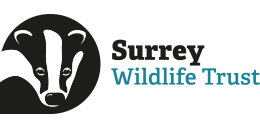Space4Nature, the groundbreaking habitat mapping and conservation project led by Surrey Wildlife Trust and University of Surrey, is preparing to start its third year of operation by deploying teams of volunteers to record the plant species which thrive on acid grassland habitats.
The volunteers will visit sites of importance for nature including Puttenham Common, where we are working in partnership with the Hampton Estate, and use a specially-designed app to record plants, including Heath Bedstraw, Sheeps Sorrel and Harebell, which typify these rare and precious habitats. These results will then help complete the design of Artificial Intelligence modelling that will be used to accurately match specific types of habitat with similar habitats close by using satellite Earth Observation images. In this way, large-scale plans to join up and protect these green spaces in a way that works best for wildlife can be developed.
Lowland dry acid grassland is found in former agricultural landscapes on acidic, often sandy, soils. These distinctive but threatened places can host up to 25 plant species per square metre. In addition to fine grasses, lichens and mosses, these include species such as Mouse-ear Hawkweed, herbs such as Sheep’s Sorrel, and tiny annuals such as Common Stork’s-bill, Changing Forget-me-not, and Parsley Piert. It can also serve as vital habitats for ground-nesting birds including Skylarks, reptiles including Adders and rare invertebrates including several cricket, bee and wasp species.
Space4Nature Project Citizen Science Officer Dan Banks says:
“Conservation is increasingly reliant on new technologies to develop solutions that can be implemented at scale. But that doesn’t mean that old fashioned ground truthing isn’t needed too.
“As the Artificial Intelligence capabilities being developed by our colleagues at University of Surrey become more sophisticated, we need more complex data to help them keep learning and evolving. With the climate and nature crisis becoming more severe, local people with an interest in nature can make a real difference by getting involved in local projects like Space4Nature.”
Over the last two years, Space4Nature has deployed more than 200 volunteers to some of the county’s most important chalk grassland, wetland and heathland habitats, including Chobham Common, Unstead wetland reserve, Sheepleas and Puttenham Common to help inform the initial development of its AI programmes.
And through a partnership with Buglife’s B-Lines project, it also worked to create and connect more than 60 hectares of habitat for pollinators, including at Quarry Hangers near Caterham and Rosamund Meadows and St Marthas Hill outside Guildford.
Later this year, Space4Nature team intends to extend its operations to more acid grassland and wetland habitats, to help provide a more comprehensive understanding of Surrey’s most important places for wildlife, and what steps might be taken to connect them up.
